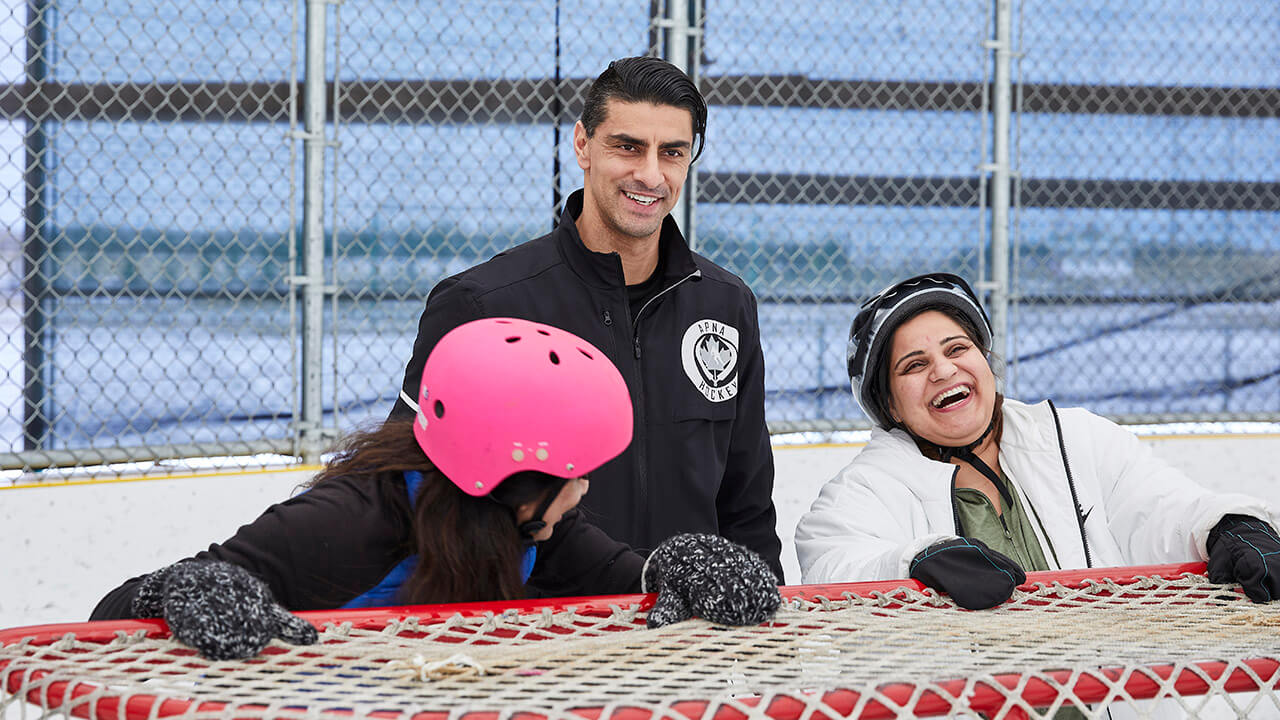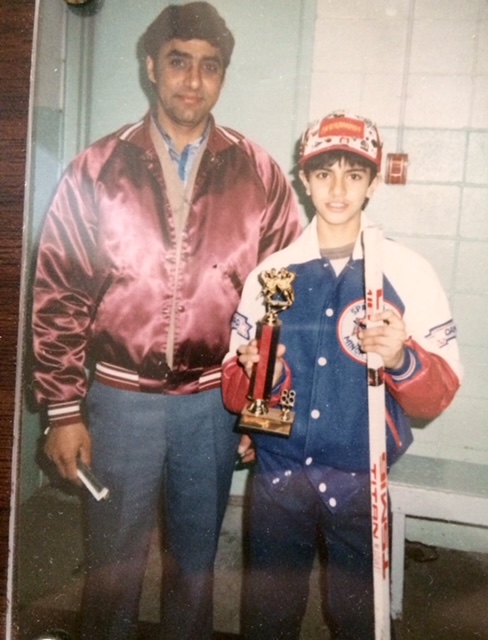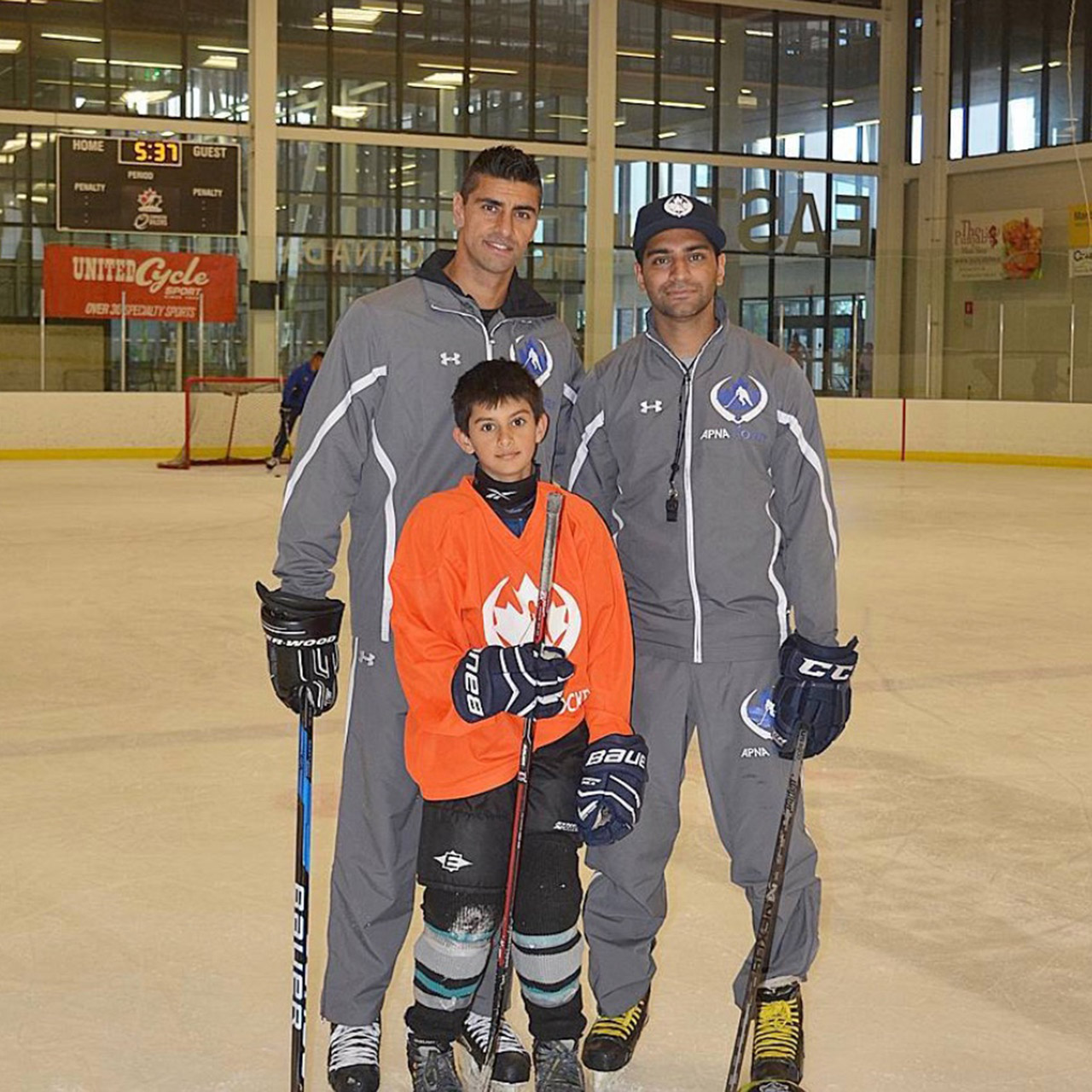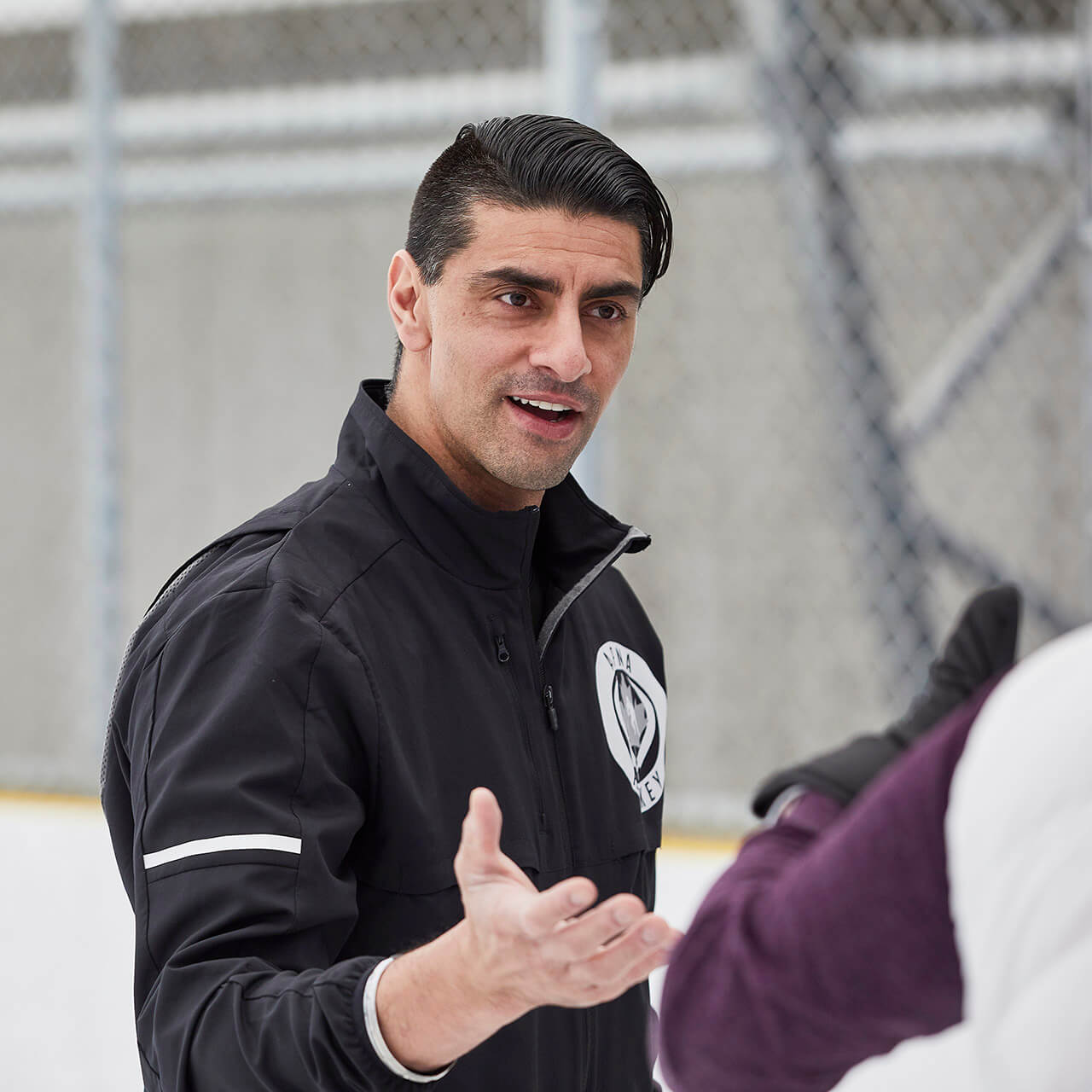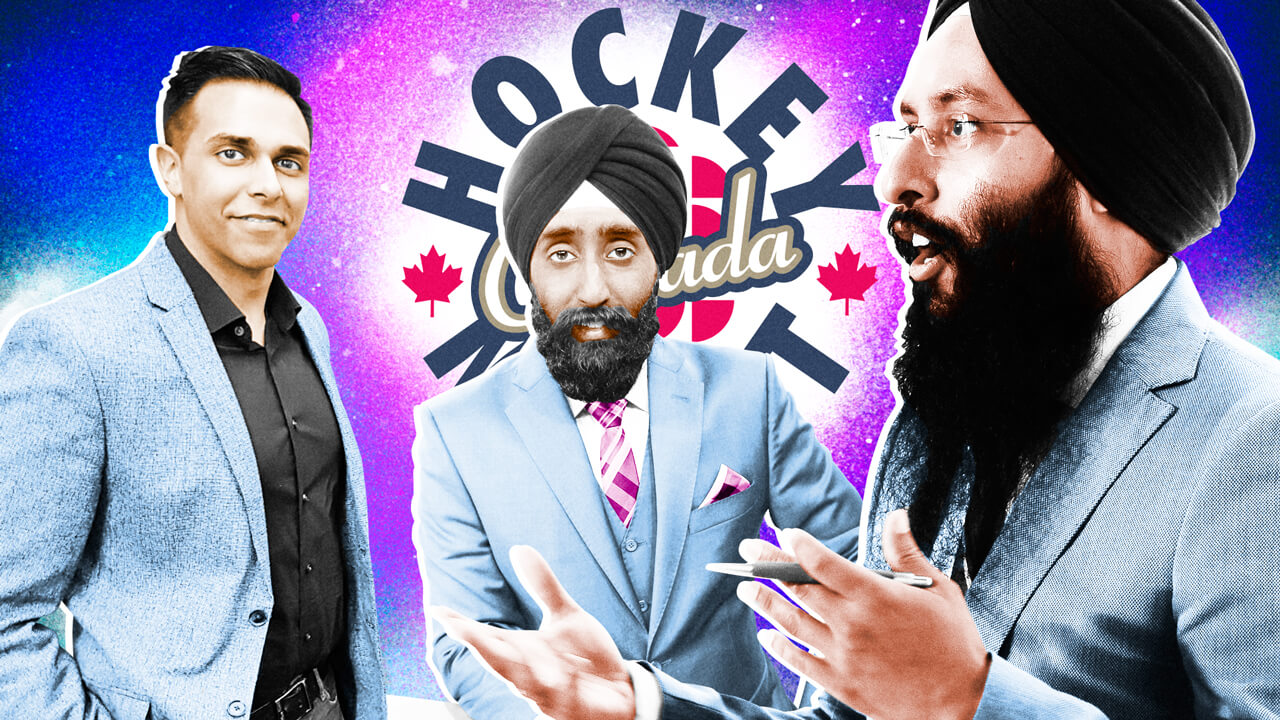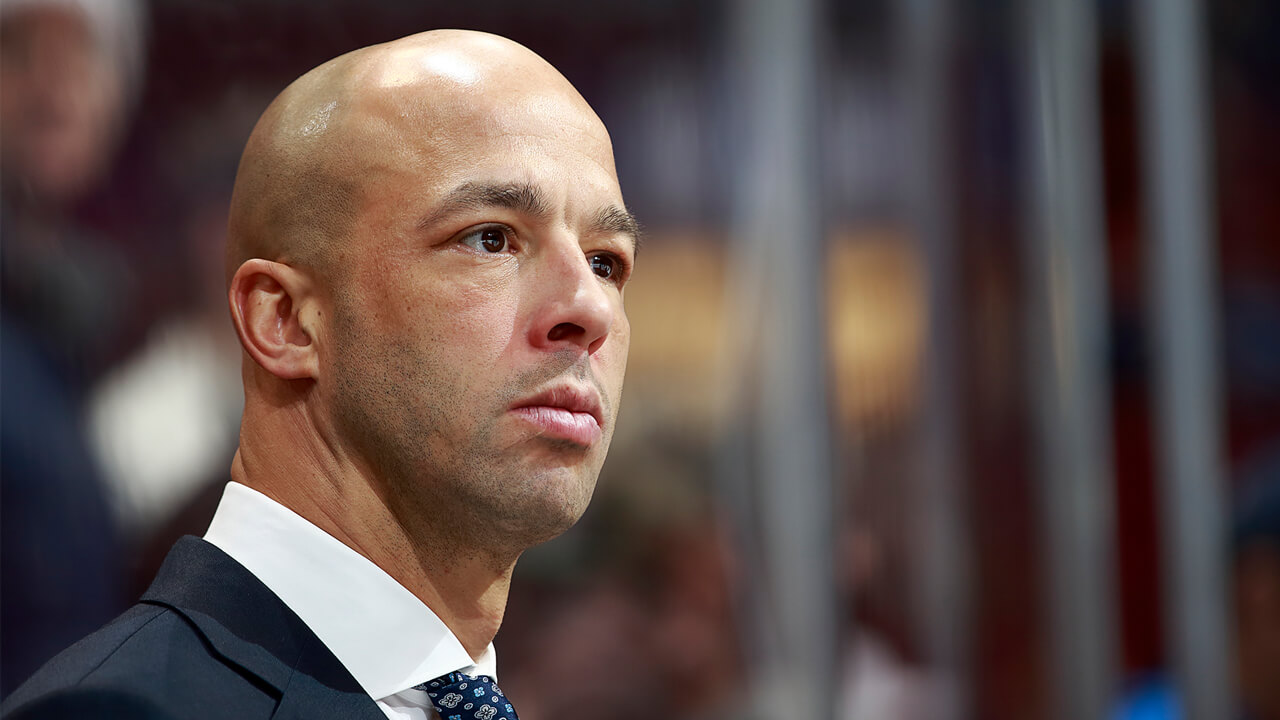The greatest impact Brar’s had, though, hasn’t come from the young skaters’ perception of him, but from his genuine understanding of them. From the chance he’s provided to finally learn from someone who understands who they are, where they come from, what they carry with them. What does that look like in practice? “Well, for one, he knows my son’s name,” says Gurp Tumber, whose 10-year-old has been working with Brar for years. “There have been coaches who couldn’t even pronounce his name. My son’s name’s not that hard — it’s Sahaj. (But) he’s been called ‘Sam.’ He’s been called ‘SJ.’ Like, coaches will just change his name.
“How are you going to teach a kid when you can’t even pronounce his name? … That kind of stuff’s not necessary when it comes to Dampy.”
All of the days, months and years of work he’s put in ultimately came together in a single moment when Brar was named the winner of the NHL’s Willie O’Ree Community Hero Award in September 2020. But the joy it brought him wasn’t found in the trophy itself, or even the spotlight. What mattered more was what it said about all the effort he and Toor had poured in — what it said about the entire Apna Hockey vision. “When he called me and told me, I started crying,” says Toor. “We were finally acknowledged, finally acknowledged by the NHL, saying, ‘You guys are onto something. You guys are doing something that’s bigger than just North American hockey.’”
It was also recognition of a journey that started long before, though. It was recognition of those younger days in Sparwood, where Heer says Brar was — even as a kid — always teaching, always bringing in younger kids to join their games, telling everyone else to take it easy on them. Even as the town’s star player, his focus was ensuring everyone felt involved, included. It was recognition of that four-city rookie-year grind, when the game tried to push him out, and he refused to relent. It was recognition of Tacoma, where even while living in a country that had grown hostile to those who looked like him, Brar continued to answer questions, continued to educate those around him about his love for the culture that made him.
The accumulation of all those bricks laid Brar’s path to his spotlight moment, quite literally — while O’Ree and the NHL selected three finalists out of more than 700 applicants, it was a public vote that took Brar the rest of the way. And the votes poured in from everywhere — from Sparwood, from Tacoma, from Calgary, even from his parents’ village in India. Those years of love for the communities around him were answered with an outpouring of love right back. Brar’s wife, Gurdeep, who spearheaded the entire nomination and voting operation, smiles wide when she thinks back to the moment their family found out he’d won. “Saiva started bawling. They were hugging each other,” she remembers. “It was so sweet.”
“It was unbelievable,” says Saiva. “I was tearing up. Our whole family was in shock.”





